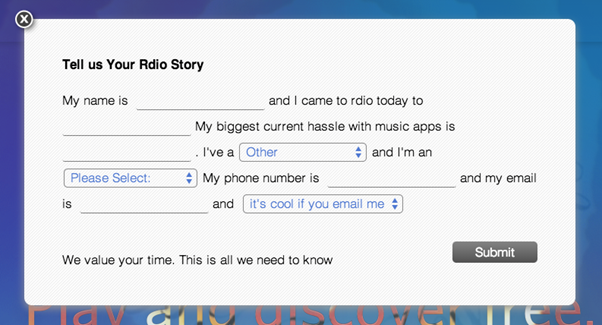| Table of Contents | ||
|---|---|---|
|
...
As mentioned earlier, you we may want to control who gets to do your our study (and who doesn’t).
The easiest case is that you’re we’re happy to get results from anyone who visits the site (in the case of web ads) or anyone you’ve we’ve emailed (presuming that being on the email list is enough qualification in itself).
However, there will be times when you we want to be picky – when you we a particular subset of users (or don’t want them).
For example, if you’re we’re testing a site structure for a bank’s online banking service, you we probably want online-banking users. More specifically, you we may want to exclude bank customers who have never used online banking and never intend to, since their answers would be irrelevant and could actually skew the results.
...
Screening by filtering a database
If you’re we’re recruiting using a customer database, you we may be able to filter the users down to those who have logged into online banking, say, once a month or more. That may be enough “screening” for youus, so you we can go ahead and run your our study without more qualifying questions.
...
Screening using separate email lists
If you we have email lists that are already separated into groups that meet your our specifications (e.g. business customers vs. consumers), then the job is easy – you we invite people from the appropriate list to the corresponding study.
However, because email invitations can get forwarded (beyond your our control), you we may still want to include a screening survey question in your the tree test, just to make sure you’re we’re getting the participants you we intended.
Screening with explicit questions
But what if you’re we’re using a web ad (which every site visitor sees) or you we have a customer email list that doesn’t include enough data to filter the users the way you we want? In these cases, you’ll we’ll need to explicitly ask each interested person if they meet your our specifications.
There are several ways to do this screening:
- Using descriptive links
The easiest way to point specific types of participants to specific tests is to use a list of links that describe who they’re for. You We can use this list in both an email invitation and in a web ad’s explanation page. This works well as long as the descriptions are clear and distinguishable from each other:
- Using a screening tool
You We can also use a dedicated screening tool (such as Ethnio) to make sure you’re we’re getting the right participants. When users click your our web ad, Facebook post, or Twitter tweet to participate, these tools pop up a window that asks the qualifying questions that you’ve we’ve provided. People who “pass” are directed through to your our tree test, while the others are politely thanked and dismissed. - Using your the tree-testing tool
If your our tree-testing tool offers a screening feature, you we could of course use that instead.
Even if it doesn’t, as a last resort, you we could ask a screening question during the tree test itself (as a survey question either before or after the tasks), and then only include the qualified participants in your our results. However, that would be a waste of time, effort, and data for those who didn’t meet your our screening criteria, and you’ll we’ll need to include them in any reward you’re we’re offering, because they did the study as you we requested (even though you we didn’t use their results).
...

